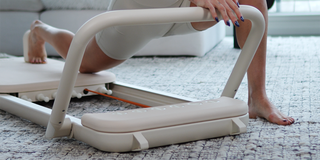Flexibility is a crucial element of fitness, often overlooked but vital for a balanced, injury-free body. Pilates, with its focus on controlled, elongating movements, offers a unique pathway to improving flexibility. Unlike some fitness modalities that can lead to muscle shortening and bulk, Pilates is about lengthening and strengthening. This makes it an excellent choice for those seeking to enhance their range of motion and overall physical wellness.
The Role of Flexibility in Fitness
Flexibility refers to the range of motion in your muscles and joints. It's more than just being able to touch your toes; it's about reducing the risk of injuries and easing daily movements. When muscles are short and tight, they lead to discomfort, poor posture, and an increased chance of strains. Pilates addresses these issues head-on, promoting a more limber and pain-free body.
Pilates: A Path to Greater Flexibility
One of Pilates' core tenets is the integration of stretching into its exercises. These active stretches not only improve flexibility but also build strength in muscles while they’re being elongated. This dual approach is far more effective in creating a supple, strong body compared to traditional stretching methods.
In Pilates, every movement is precise and controlled, focusing on stretching muscles correctly to prevent overextension and injury. It's a whole-body workout, ensuring balanced muscle development and flexibility.
Starting Your Pilates Journey
For beginners, Pilates offers a gentle introduction to flexibility training. Start with basic mat exercises to slowly build your range of motion.
Integrating Pilates into Your Routine
Consistency is vital in achieving the flexibility benefits of Pilates. Incorporating Pilates into your weekly routine, ideally 3-5 times a week, can significantly enhance your flexibility. Starting with shorter sessions and gradually increasing their duration as your body becomes more accustomed to the exercises is a sensible approach.
Enhancing Your Flexibility with Pilates
To make the most of your Pilates sessions for flexibility, it's important to warm up properly with gentle stretches or light cardio. This prepares your muscles for the more intensive stretching to come. Pilates movements are closely tied to breath, and mastering this breathing technique can help deepen your stretches and relax your muscles.
It's crucial to listen to your body and never push into painful ranges. Stretching should involve mild tension but not pain. Consistency in practice will help you maintain and improve your flexibility. Don’t forget to cool down after your Pilates session to help your muscles relax and recover.
Moving Beyond Basics
As you progress, you can explore more advanced Pilates. The Somato reformer machine offers resistance and support while being compact and user-friendly for home use, making it an effective tool for advanced flexibility training.
Overcoming Flexibility Plateaus
If your progress in flexibility stalls, changing your routine can help. Experiment with new Pilates exercises or incorporate props like resistance bands or Pilates rings for an added challenge.
The Importance of Nutrition and Hydration
Flexibility isn’t solely achieved through stretching. Adequate hydration and a balanced diet rich in nutrients like magnesium and omega-3 fatty acids are essential. These nutrients aid in muscle recovery and can improve flexibility.
Incorporating Pilates into your fitness regime opens up a world of benefits, primarily enhanced flexibility, better posture, and greater range of motion. It's important to remember that increasing flexibility is a gradual process. Patience and consistency in your Pilates practice will lead to noticeable improvements over time. With its unique approach to exercise, Pilates can guide you to a more flexible, balanced, and healthier body.
